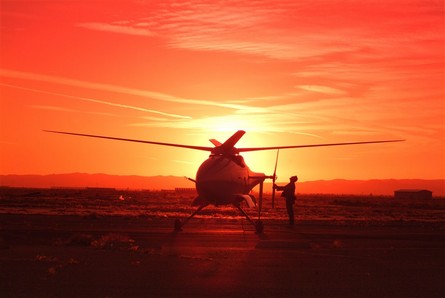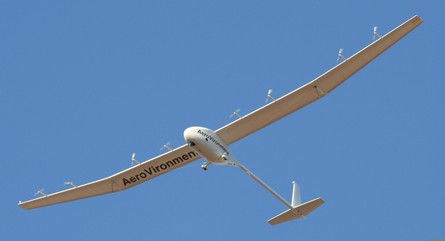Boeing's A160T Hummingbird unmanned rotorcraft has completed an 8h flight, it's longest yet, carrying a 450kg (1,000lb) payload.
The helicopter reached an altitude of 5,000ft (1,500m) on the 26 September flight from Victorville, California. It was carrying a simulated battlefield resupply payload.
"The ability to carry a 1,000lb payload and fly for that duration puts the A160T in a category by itself," says programme manager Jim Martin.
First flown in June, the A160T is a turbine-powered version of the Hummingbird unmanned rotorcraft originally designed by Frontier Systems, which was acquired by Boeing in 2004.
Boeing is building 11 A160Ts for the US Defense Advanced Research Projects Agency and US Special Operations Command.

© Boeing
The Hummingbird has an optimum-speed rotor that varies its RPM with altitude, cruise speed and gross weight. Conventional helicopter rotors operate at 100% RPM almost all the time.
Slowing the 11m-diameter rigid rotor by up to 50% extends the unmanned helicopter's endurance. Boeing's goal is to fly the A160T for 18h with a 135kg payload.
Powered by a Pratt & Whitney Canada PW207, the A160T is designed to cruise at more than 140kt (260km/h), hover up to 15,000ft and reach a ceiling of 25,000-30,000ft.
Boeing says future payloads will include a combination of sensors, weapons and systems to perform a range of missions including persistent surveillance, communications relay, target acquisition, direct attack, precision resupply and personnel recovery.
US SOCOM plans to evaluate the A160's military utility. Separately, the special-forces command also plans to evaluate AeroVironment's hydrogen-powered Global Observer UAV, which is designed to stay aloft for up to seven days at altitudes from 55,000-65,000ft.

© AeroVironment
AeroVironment has received a $57 million contract to deliver one Global Observer, with an option for two more vehicles taking the potential value to $108 million.
The goal of the joint capabilities technology demonstration is to evaluate the tactical utility of a UAV able to operate in the stratosphere for up to seven days.
A system comprising two or three air vehicles would be able to provide continuous surveillance or communications relay over an area of interest, says AeroVironment.
Source: FlightGlobal.com























